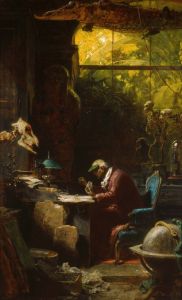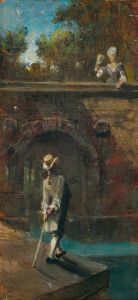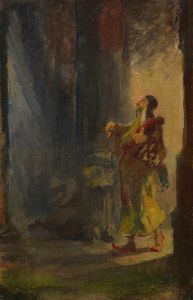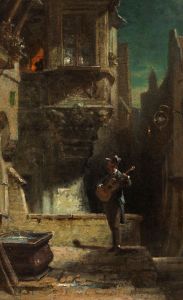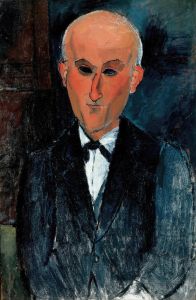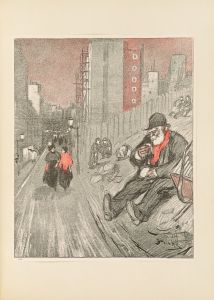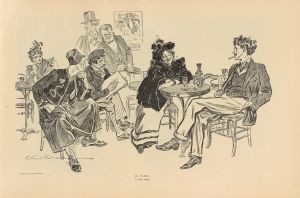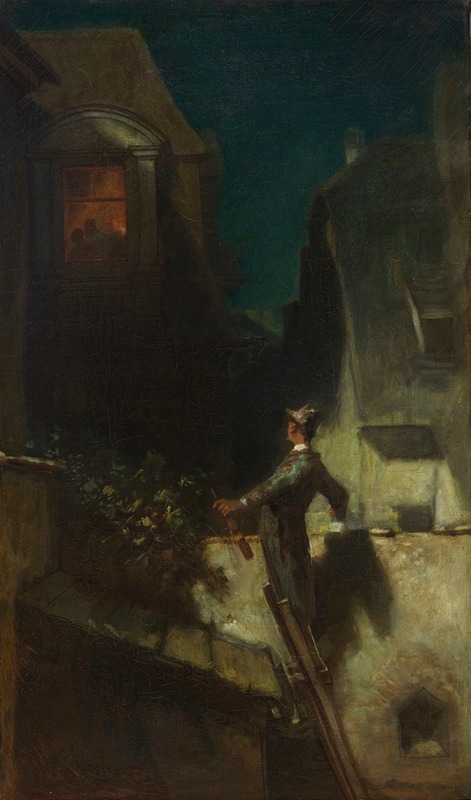
Der Mondscheingeiger
A hand-painted replica of Carl Spitzweg’s masterpiece Der Mondscheingeiger, meticulously crafted by professional artists to capture the true essence of the original. Each piece is created with museum-quality canvas and rare mineral pigments, carefully painted by experienced artists with delicate brushstrokes and rich, layered colors to perfectly recreate the texture of the original artwork. Unlike machine-printed reproductions, this hand-painted version brings the painting to life, infused with the artist’s emotions and skill in every stroke. Whether for personal collection or home decoration, it instantly elevates the artistic atmosphere of any space.
"Der Mondscheingeiger" (The Moonlight Fiddler) is a painting by the German Romantic artist Carl Spitzweg, who is known for his detailed and often humorous depictions of everyday life in the 19th century. Spitzweg was born on February 5, 1808, in Unterpfaffenhofen, Bavaria, and initially pursued a career in pharmacy before turning to painting. He became one of the most beloved artists of the Biedermeier period, a time characterized by a focus on the domestic and the idyllic.
"Der Mondscheingeiger" is one of Spitzweg's most famous works and exemplifies his talent for capturing the charm and whimsy of ordinary moments. The painting depicts a solitary violinist playing his instrument under the moonlight, standing on a rooftop. The scene is bathed in the soft, silvery light of the moon, creating a serene and almost magical atmosphere. The violinist appears to be lost in his music, oblivious to the world around him, which adds a sense of introspection and tranquility to the piece.
Spitzweg's use of light and shadow in "Der Mondscheingeiger" is particularly noteworthy. The moonlight casts gentle highlights on the violinist and the surrounding architecture, emphasizing the quiet beauty of the night. The artist's attention to detail is evident in the textures of the rooftop tiles, the musician's clothing, and the delicate features of his face. This meticulous approach helps to create a vivid and lifelike scene that draws the viewer into the moment.
The painting also reflects Spitzweg's interest in the lives of ordinary people and his ability to find poetry in the mundane. The solitary figure of the violinist, playing his music for no audience but the night, suggests a deep connection to his art and a sense of personal fulfillment that transcends the need for external validation. This theme of finding beauty and meaning in everyday life is a recurring motif in Spitzweg's work.
"Der Mondscheingeiger" is housed in the Neue Pinakothek in Munich, Germany, which holds an extensive collection of 19th-century European art. The painting continues to be celebrated for its evocative portrayal of a quiet, introspective moment and its masterful use of light and composition. It remains a testament to Carl Spitzweg's skill as an artist and his ability to capture the essence of human experience with warmth and sensitivity.





